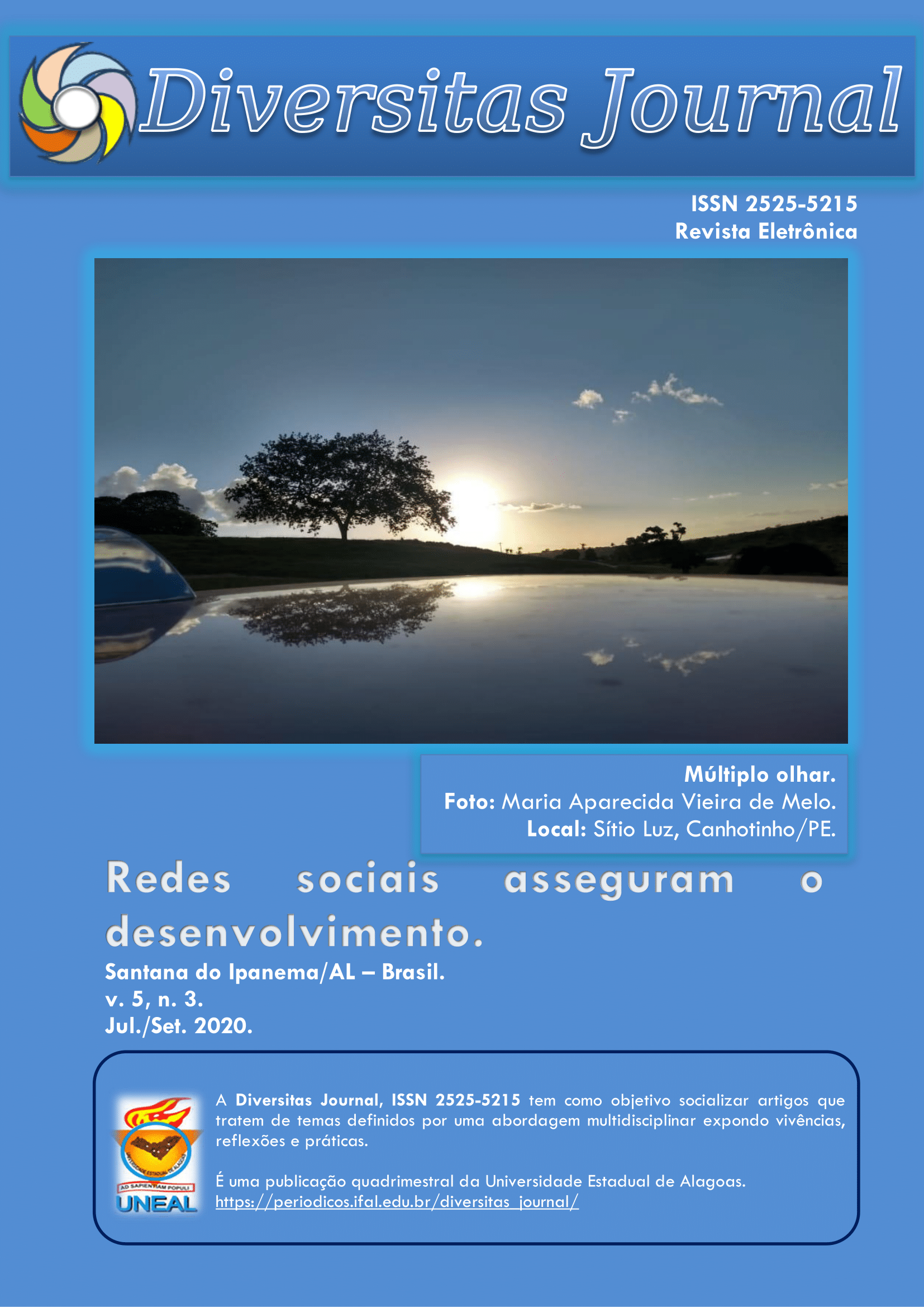Produção de mudas de Moringa oleifera em diferentes concentrações de lodo de esgoto tratado com calcário
DOI:
https://doi.org/10.17648/diversitas-journal-v5i3-958Abstract
The production of seedlings is an important aspect when you want to get a good quality product. Among the procedures performed for this activity, the choice of substrate is of great importance, since it defines the quality parameters of the seedlings produced. Among the alternatives, sewage sludge can be used as a substrate, associating its use with the production of Moringa oleifera seedlings, a species that has been the target of several studies due to its morphological and nutritional characteristics. Thus, the objective of this work was to evaluate the growth of Moringa oleifera seedlings in different concentrations of sewage sludge treated with limestone. The seeds were collected in the experimental area of the Agricultural School of Jundiaí (EAJ). The sludge was supplied by the sewage treatment plant of the Federal University of Rio Grande do Norte (UFRN). The experiment was conducted in a greenhouse at EAJ. The sludge treatment was carried out at room temperature with limestone for its sanitization. The experiment comprised six treatments: T0: 100% sand (control); T20: 20% biosolids + 80% sand; T40: 40% biosolid + 60% sand; T60: 60% biosolids + 40% sand; T80: 80% biosolid + 20% sand; T100: 100% biosolid. Totalizing 32 sample units (replicates) for each treatment. The data were analyzed in the Bioestat program. According to the analyzes, the seedlings submitted to the treatments T0, T80 and T100 had growth at a lower height than the seedlings of the other treatments, where the best results were for T20, T40 and T60. There was no statistically significant difference between the mean values of the seedling diameter of the treatments with the presence of the sludge, with only those differences for the seedlings submitted to the control treatment (T0). The seedlings submitted to T60 presented better growth results in height, H / D ratio and number of leaves. There was no difference in the means of the PMSA, PMST and IQD variables, different from the PMSR and the PMSA / PMSR ratio, where there was a statistically significant difference, with higher T0 and T60, respectively. It can be concluded that the concentrations of sludge that presented the best results were 40 and 60%. It was observed lower growth of the seedlings submitted to the control (T0), T80 and T100 treatments. Therefore, the use of sludge for the production of seedlings is a technically feasible alternative.
Metrics
Downloads
Published
How to Cite
Issue
Section
License
Copyright (c) 2020 Alex Nascimento de Sousa, Débora de Melo Almeida, Rodolpho Stephan Santos Braga, Vital Caetano Barbosa Júnior, José Augusto da Silva Santana, Juliana Lorensi do Canto

This work is licensed under a Creative Commons Attribution 4.0 International License.
The Diversitas Journal expresses that the articles are the sole responsibility of the Authors, who are familiar with Brazilian and international legislation.
Articles are peer-reviewed and care should be taken to warn of the possible incidence of plagiarism. However, plagiarism is an indisputable action by the authors.
The violation of copyright is a crime, provided for in article 184 of the Brazilian Penal Code: “Art. 184 Violating copyright and related rights: Penalty - detention, from 3 (three) months to 1 (one) year, or fine. § 1 If the violation consists of total or partial reproduction, for the purpose of direct or indirect profit, by any means or process, of intellectual work, interpretation, performance or phonogram, without the express authorization of the author, the performer, the producer , as the case may be, or whoever represents them: Penalty - imprisonment, from 2 (two) to 4 (four) years, and a fine. ”















.png)




